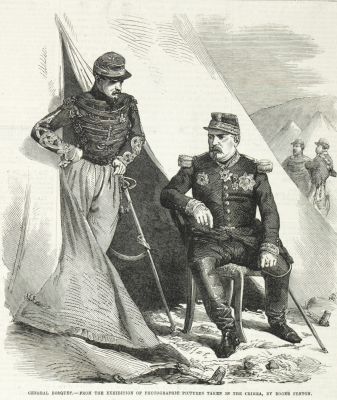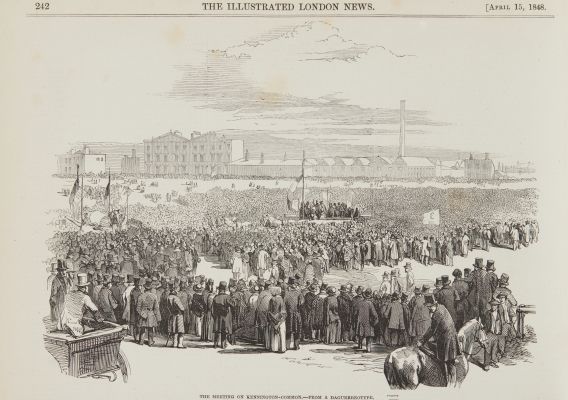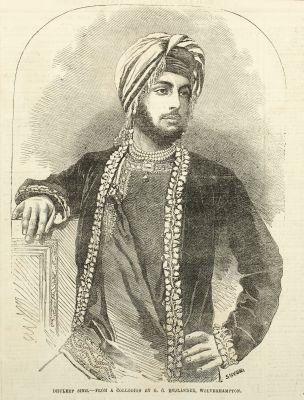
Title
Bringing Home the MayArtist
Robinson, Henry Peach (British, 1830-1901)Publication
The Illustrated London NewsDate
1863Process
Engraving (from photograph)Image Size
13.5 x 33.5 cm
The godfather of Pictorialism and extremely influential in nineteenth century photography circles, Henry Peach Robinson shaped public opinion, both through the photographs he exhibited and the books he wrote. He learned combination printing from Oscar Gustave Rejlander, but easily surpassed the teacher, producing definitive photographs printed from as many as nine negatives. He led a secession group of photographers away from the Royal Photographic Society and was a founder member of the Linked Ring Brotherhood in 1892. [1]
Robinson considered this his most ambitious composition picture, being made from 9 negatives. [2] Bringing Home the May is originally an albumen print from wet plate collodion negatives. It is reproduced here as a line engraving in the the world’s first illustrated weekly news magazine, the Illustrated London News.
Robinson began with preliminary sketches and drawings, often combining pencil, watercolor, and cut-out figures from “test” photographs. The models, costumes, and accessories then had to be selected and prepared, and written on the sketch. Another consideration in planning the work (one which was beyond the photographer’s control) was the weather: for this picture, the negatives could only be taken when the May was in bloom, which does not last above a fortnight, as Robinson noted, and sunshine was necessary for photographing the figures. The initial printing was difficult for at least two reasons: the paper had to be specially made as there was none on the market that size [40 × 15 inches], and each of the nine wet plate collodion negatives had to be printed separately. Subsequently, Robinson fit the negatives with registration marks, which did help somewhat to simplify the printing process.
This print is an example of the ‘interpretive’ role that engravers played in translating photographs into ink before the advent of photogravure and other continuous tone processes like the halftone made it an economically feasible endeavor later in the century.
Reproduced / Exhibited
Oliphant, Dave, and Thomas Zigal. Perspectives on Photography: Essays on the Work of Du Camp, Dancer, Robinson, Stieglitz, Strand & Smithers at the Humanities Research Center. Austin: Humanities Research Center, The University of Texas at Austin, 1982. fig. 5 (albumen)
Gernsheim, Helmut. The History of Photography: The Age of Collodion. London: Thames and Hudson, 1989. p.48
References
[1] Roberts PG Royal Photographic Society of Great Britain. Photohistorica : Landmarks in Photograph.y : Rare Images from the Collection of the Royal Photographic Society 1st ed. New York: Artisan; 2000.
[2] The Practical Photographer of February 1898.
Gernsheim, Helmut. The Rise of Photography, 1850-1880: The Age of Collodion. London: Thames and Hudson, 1989. p 44







